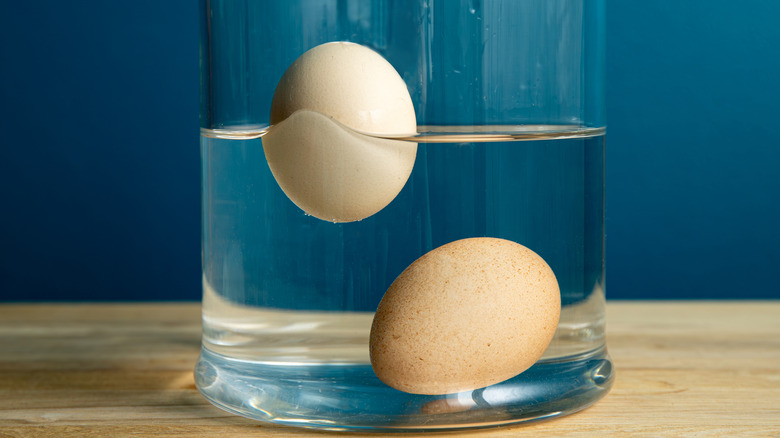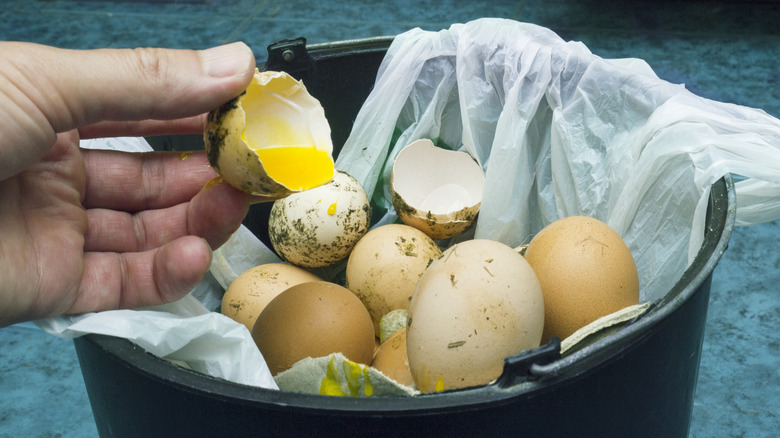What It Really Means When Eggs Float In Water
There are several myths about eggs. One of the most common is that their cholesterol content is bad for your heart, but in reality, it doesn't affect blood cholesterol levels as much as once thought. Another big myth is that, when an egg floats in water, it means that it's bad. While that may be true some of the time, it's not always the case.
Among the cool science experiments to do with eggs, one of the more popular options is floating an egg in water by adding salt. In the experiment, the dissolved salt raises the density of the water, making the egg float, but without the salt, the egg needs something else to increase its buoyancy: air. But how does air get inside of the shell? Under a magnifying glass, you can see that the shell has pores, which are tiny holes. The pores are there to allow oxygen into the egg so that the chick inside can breathe as it develops.
When there's no chick developing inside, the air accumulates, replacing the water inside that evaporates as the egg ages. The reduced weight from the evaporating water and the air pocket building up combine to make the egg buoyant. Therefore, what it really means when an egg floats in water is that it is old — but not necessarily bad.
The right way to tell when an egg is bad
Since a floating egg isn't always a bad egg, how are you supposed to know when it's no longer safe to eat? There's actually no single way to tell. The first option is to consider how long it has been in the refrigerator. According to the USDA, eggs stay good in the fridge for three to five weeks, as long as the temperature is set to 40 degrees Fahrenheit or colder. If you hard boil them, you can only store them in the fridge for about a week. You should keep the "sell by" or expiration date in mind as well.
The second option is to smell it directly. Like most foods, eggs release gases as they rot, and this hydrogen sulfide does not smell like roses and sunshine. The saying, "smells like a rotten egg," is a reference to that sulfurous scent. Sometimes, you can't smell the gases through the shell. If that's the case, you might see changes in how it looks, such as the presence of powder from mold or the development of slime from bacteria.
The third option — and the best one — is to crack the egg into a clean bowl to inspect it closer for discoloration. Any iridescence or pink color mixed in with the whites or yolks is a sign of bacterial growth. There might be a foul smell, too. In any of these cases, you should throw the egg away and wash any bowls or utensils that it touched before testing others.

